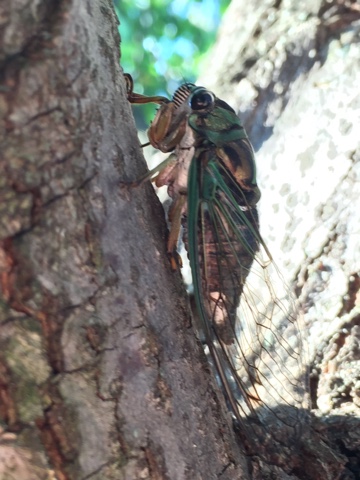On our walk along the trail this afternoon the first insect we encountered was this small moth, feeding on the flowers of a white teasel.
The teasel was also attractive to this Yellow Swallowtail butterfly, but he was too far away to photograph properly with a phone.
Further on we came across a large cricket, sitting quietly on a narrow branch over the path.
Our biggest surprise was to find several young trees where cicadas were easily visible.
We know that we are surrounded by cicadas as we hear them night and day from May to the end of October - but other than the occasional dead one on a path, we don't usually see them.
They are remarkably well camouflaged against the tree bark.
The presence of these strange dried up carapaces is a sign of cicada activity.
Cicadas start life as a small white egg laid on tree bark and turn into a white nymph which feeds on the tree then drops to the ground and burrows to eat the tree roots. It remains there between 2 and 17 years (depending on species - there are 390 different ones in the US - as well as climate). The mature and aging beetle then emerges from the ground and climbs up the tree where it sheds its outer casing to reveal the adult winged insect.































